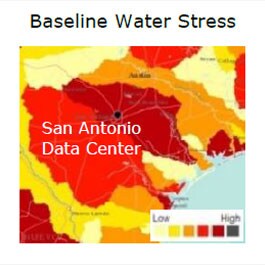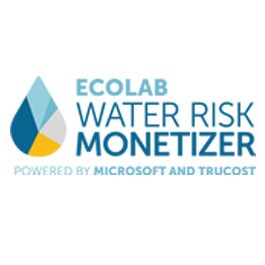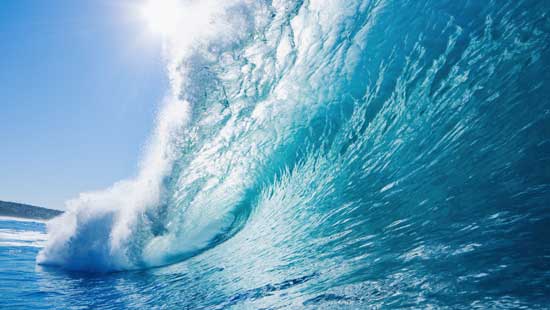How Dry Is Texas?
Introduction
Microsoft believes that technology can empower every person and organization on the planet to thrive in a resource constrained world. One of the areas where Microsoft focuses on sustainability is responsible water stewardship, including in their own office buildings, manufacturing sites and data centers. Microsoft’s corporate water strategy consists of four pillars: understanding water-related risks and impacts to the business and to the communities where they operate, using benchmarking to increase accountability and improve local water use, identifying locations experiencing high water scarcity and prioritizing where water reduction measures are needed, and implementing water saving technologies and strategies.

Current Assessment Of Leon Creek Watershed
Microsoft’s data center in San Antonio, Texas, is located within the Leon Creek Watershed. According to the World Resources Institute’s Water Risk Atlas, San Antonio is located in an extremely high baseline water stress region of greater than 80 percent. Not only are many of the watersheds in San Antonio considered highly stressed, but many are facing water quality issues. In the Leon Creek Watershed, significant water quality impairment issues are largely due to flooding and storms that heighten the dispersion of trash and pollutants, as well as stream bank erosion due to high flow rates and velocities that also add to the problem of increased pollutants.
The San Antonio Water System (SAWS)
The San Antonio Water System (SAWS), a public utility owned by the City of San Antonio, distributes the water for residential and commercial industrial consumers. The SAWS offers rebates for certain water conservation projects including drought-tolerant plants in landscaping, irrigation design rebates, and rainwater harvesting methods. The SAWS also offers cooling tower audits and is required to monitor certain types of industries, including data centers, to ensure they do not impact the treatment system, which must meet permitted discharge limits and loading requirements. For these reasons, Microsoft’s data center’s water use and effluent require attention and proper strategies to comply with the SAWS’s requirements. To proactively manage the region’s water resources, the SAWS uses drought restrictions that vary by stage and limit water use based on specific levels of the Edwards Aquifer, which supplies more than 90 percent of the drinking water for SAWS customers and is also the aquifer for Leon Creek.
Making The Business Case For Water Stewardship
Through a partnership with Nalco Water, an Ecolab company, Microsoft implemented a site-specific water efficiency and quality plan that helped reduce overall operating costs and water usage in the catchment area. This has helped Microsoft take steps to become a better water steward by recognizing the importance smart water management has to their operations and the impact outside the fences. In the construction of Microsoft’s San Antonio data center, recycled water from SAWS was available to meet the freshwater requirements for their cooling system. However, the challenges in using recycle water reliably require real-time cooling system monitoring and control.
Nalco Water understands that cooling water systems in data centers have a critical role in ensuring reliable uninterrupted operations. Given the current water quality and quantity constraints at Microsoft’s data center, the on-site Nalco Water engineer recommended a smart technology called 3D TRASAR™ Technology. The 3D TRASAR™ Technology utilizes real-time monitoring and 24/7 information management to detect problems before they occur and then determine the appropriate response to deliver water, energy and cost savings. One unique feature of Nalco Water’s smart technology is to automatically manage different incoming water quality sources, such as recycled water, while optimizing performance, water use and costs for the system. This provided protection against water quality variability, which results in increased water use.
Leveraging Nalco Water’s Water Risk Monetizer tool, Microsoft was able to model the full value of water to its business and use risk-adjusted prices to reinforce the business case for water stewardship. The WRM output showed that the risk-adjusted water bill, representing the full value of water to Microsoft’s operations, is more than 11 times greater than the current water bill presented by the San Antonio Water System. The WRM outputs helped Microsoft drive water resiliency at the local level and make the business case for Nalco Water technologies, like 3D TRASAR™ cooling water automation, to manage and value risk through water recycling and reuse projects.
With Nalco Water's 3D TRASAR™ Technology and by choosing recycled water over potable water, Microsoft is able to save more than $140,000 in water costs per year, while also avoiding 58.3 million gallons of potable water per year.
Key Takeaways
The Water Risk Monetizer outputs helped demonstrate the full value of water to Microsoft’s operations, supporting a continued and proactive water stewardship strategy for quality and quantity investments. Nalco Water is partnering with Microsoft across their data centers to leverage smart water management practices and advanced analytics to increase operational resilience and reliability.
Related Stories
Visitors who viewed this story also viewed

Our Vision for Clean Water
According to World Resources Institute (WRI), our world will experience a 56% freshwater deficit by 2030 if nothing changes – placing urgent pressure on businesses to rethink the way water is managed. To address these challenges, businesses around the world are setting ambitious water goals. Ecolab helps customers do more, using less water – improving heating and cooling, industrial cleaning and sanitizing processes, and wastewater treatment.


